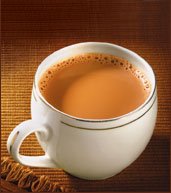Tea like elsewhere is brewed in various manner in India. The most popular is the black leaf from Assam and Nilgiri. Black and green tea from Darjeeling are of premium variety consumed by connoisseurs and the upper class.
Black tea brew is less popular in India but is consumed by many whence milk is a difficult commodity. The chai is popular all over India and is brewed with addition of cow, buffalo and goats milk. In rural India sugary brew is much preferred as a tradition.
Masses like plain and simple chai without any addition, milk being an exception. But in winters some other forms of tea are consumed.
My best combination is shreds of ginger and cardamom added to the boiling liqueur. This is a wonderful mix and gives relief from cold and indigestion as well. Some consumers add a dash of lemon to black tea. Another good addition to the brew is cinnamon. If you add in right quantity the flavor and aroma is magnificent
Some health conscious drinkers add lemon grass especially to ward of cold and bad throat. For me ginger does this job well. There are various mix of masalas available in packets all over the country. Some of these are fine blends and add to the taste of the brew.
Many with subtle taste add varying quantity of milk in black tea. I like chai this way it is mostly available in cafe, restaurants and Indian Railways. Read more on Chai Tea in India.




